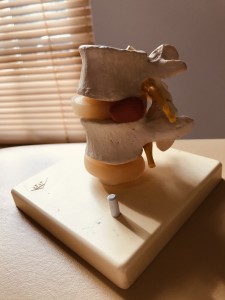A certain level of cardiovascular fitness and strength will be required if you want to make the most out of every day on the slopes and still have the energy for the all important après ski at the end of the day.
Try to do some light exercise before you head for the slopes – a light run, walk, or even opting to take the stairs over the lift will make all the difference to your overall stamina once you arrive in resort.
There are also a couple of really easy exercises that you can do at home. Your main focus should be on your quadriceps, glutes and calf muscles and a strong core is also really important.
1. Squats
Your thighs (quads) are probably the hardest working muscles when you are skiing. Squats are one of the best, not to mention easiest ways of building strength in your legs.
Stand with your legs shoulder width apart.
Push your hips back.
Bend your knees until your thighs are parallel to the floor.
Keep your knees behind your toes.
Stand back up and repeat.
Repeat until moderate fatigue (until you feel at 80% of your maximum effort).
Top tip: If you want to make this a little harder, do the exact same motion but with a weight in each hand.
2. Squat Jump
Take the squat to the next level with a squat jump. Not only will this exercise continue to strengthen your legs, it will also help to develop explosiveness in the quads and glutes.
Start with your feet shoulder-width apart.
Squat down so your thighs are parallel to the floor, then jump high in the air.
Try to do four sets of four with a short break to catch your breath between each set.
Top tip: Try to land as softly as you can on your feet.
3. Wall squats
Wall squats are great for building endurance which will help to prevent the burning feeling in your legs on long, tough runs.
Find a clear wall, stand with your back resting against the wall.
Move down into your squat position.
Hold the position for as long as you can.
Try to repeat two to four times with a short break in between each go.
Top tip: Really push your back and backside against the wall for best results.
4. Lunges
Lunges are great not only for strength but for balance too.
Start with your feet together.
Step one leg forward and bend down so the front leg forms a right angle. Your back leg should be almost touching the floor.
Repeat until moderate fatigue (until you feel at 80% of your maximum effort).
Top tip: Keep your upper body straight, with your shoulders back and relaxed and chin up. Try to keep your core engaged at all times.
5. The Plank
You use your core muscles around your lower back and abdominal muscles a lot more than you would think when skiing, especially when you are turning or taking on more technical terrain.
Lie flat on the floor.
Rest your elbows in the floor, push up your hips and rest only on your elbows and toes.
Hold the position for 60 seconds.
Repeat the exercise on either side. Lift yourself onto one elbow and the side of your foot to work your oblique muscles.
Top tip: Do not let your hips dip. Your body should form a relatively straight line when in the air.


 3 Top Tips for Getting More Out of Your Physiotherapy Appointments
3 Top Tips for Getting More Out of Your Physiotherapy Appointments




